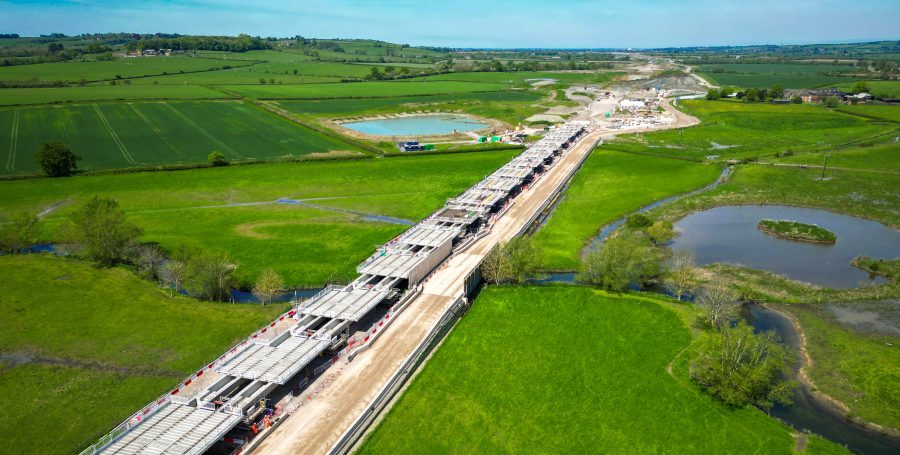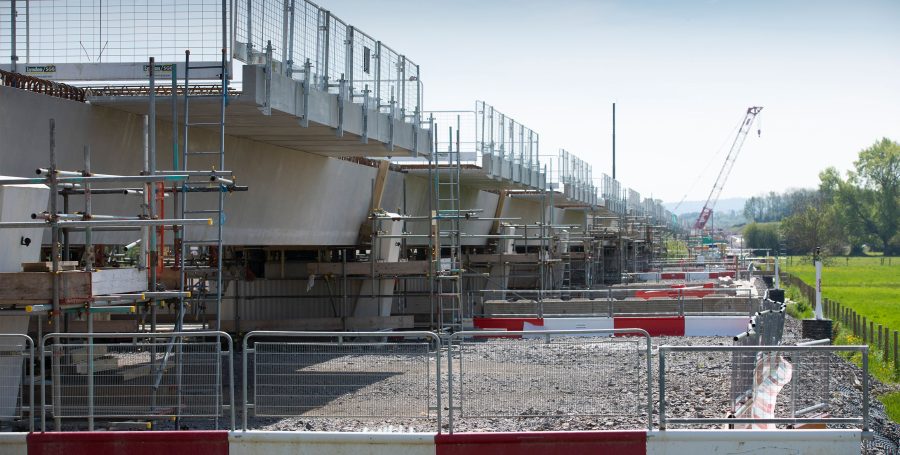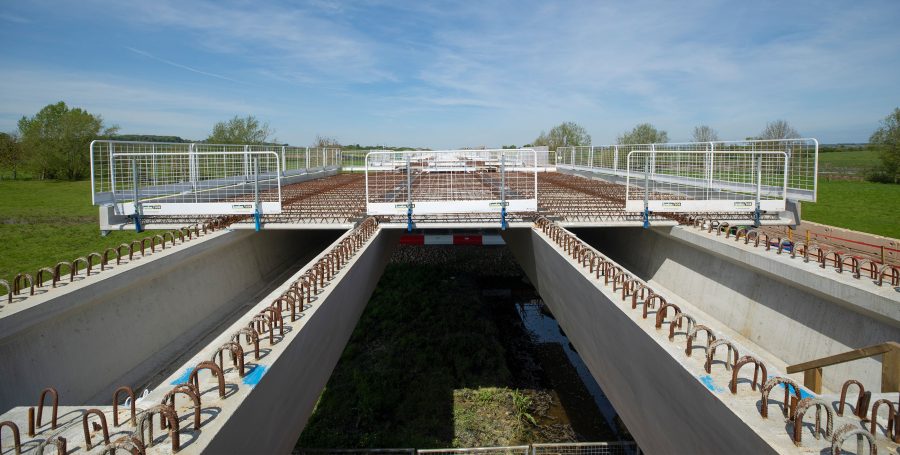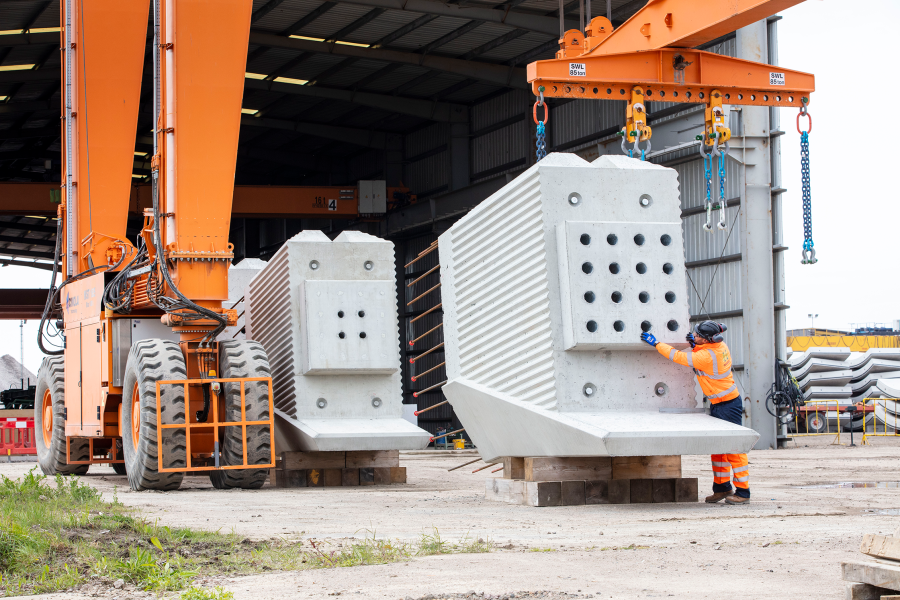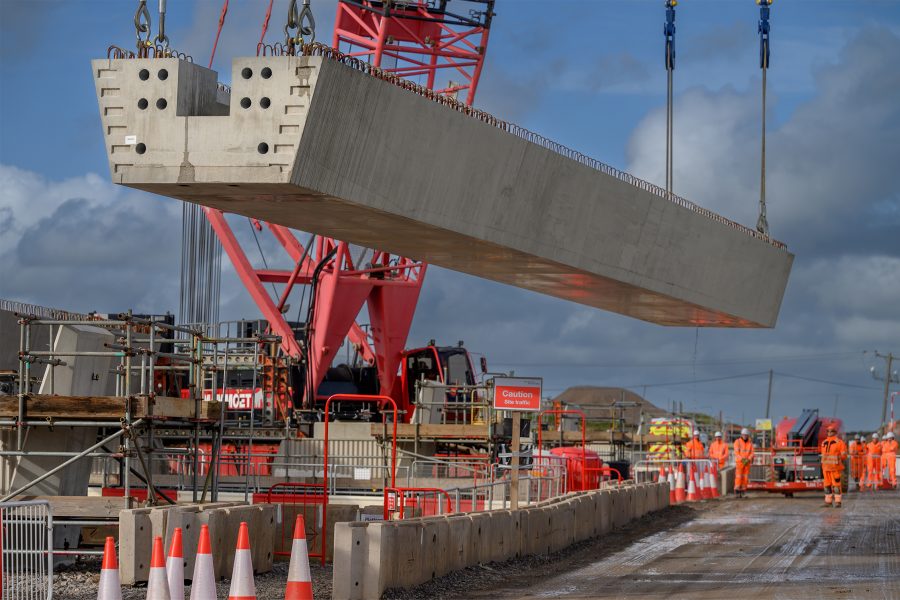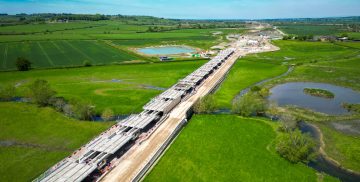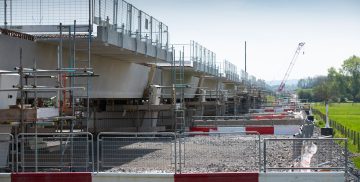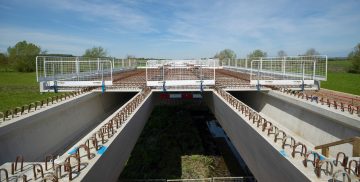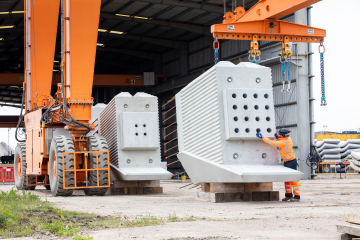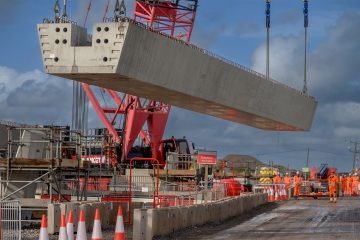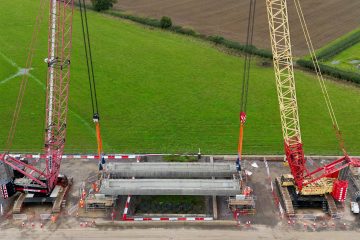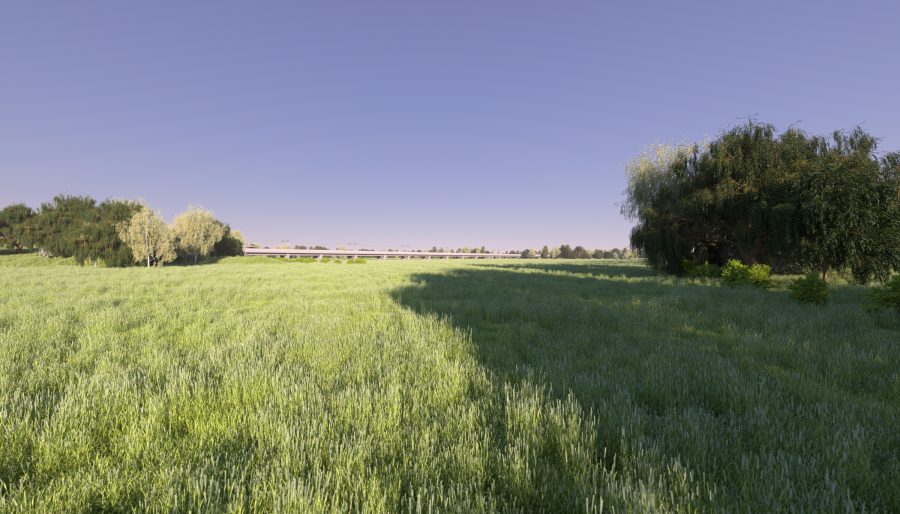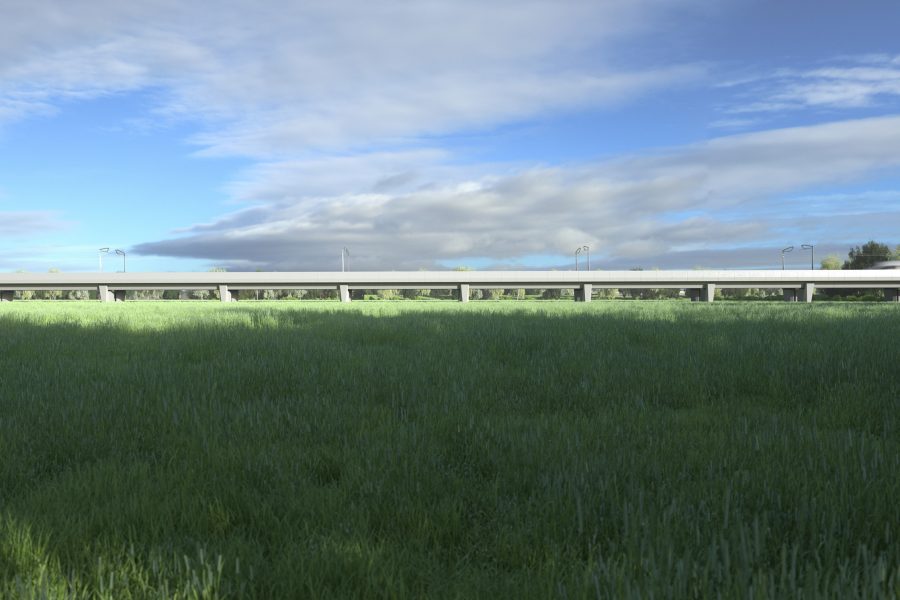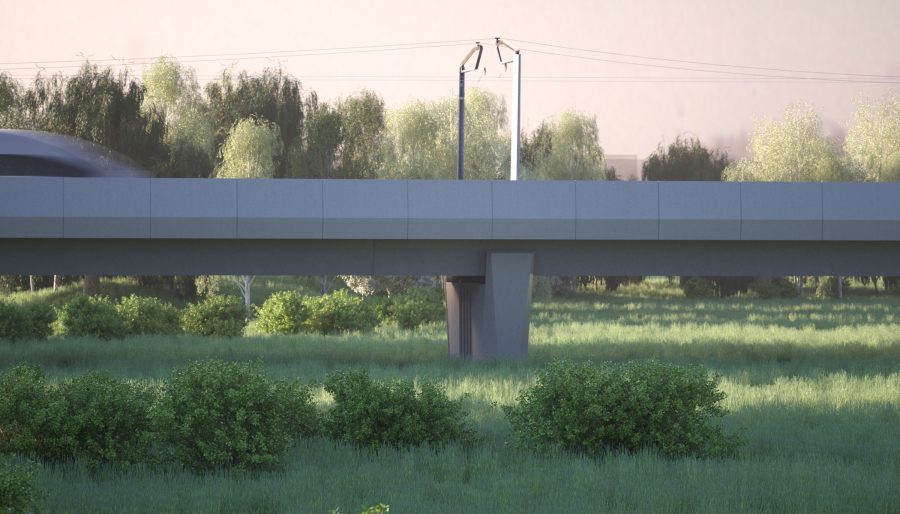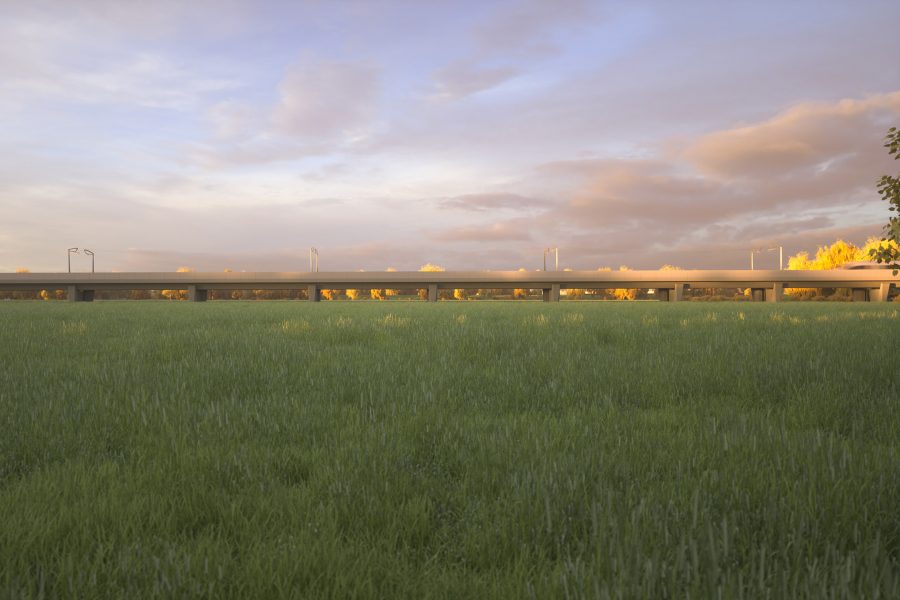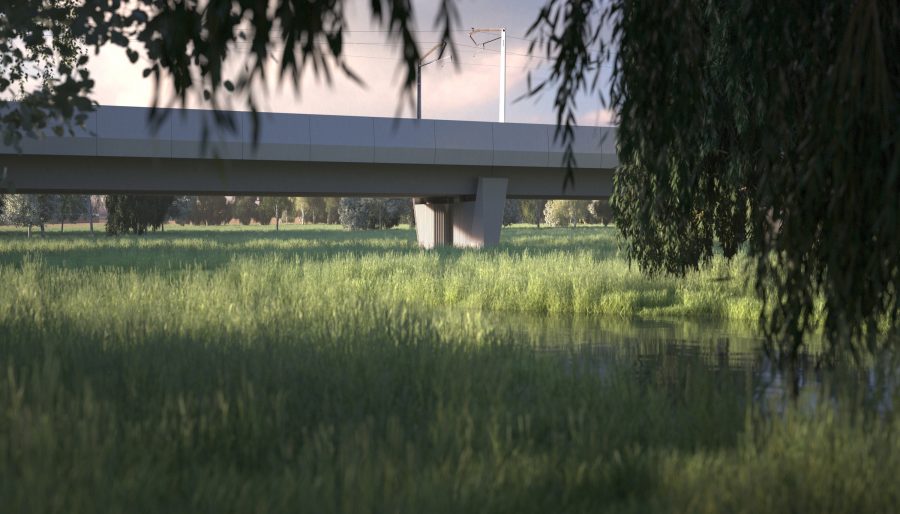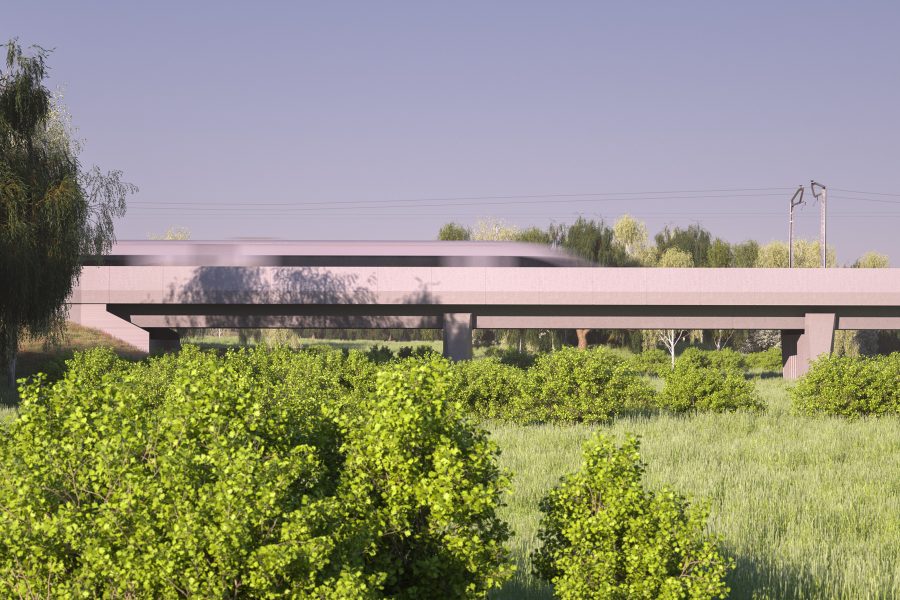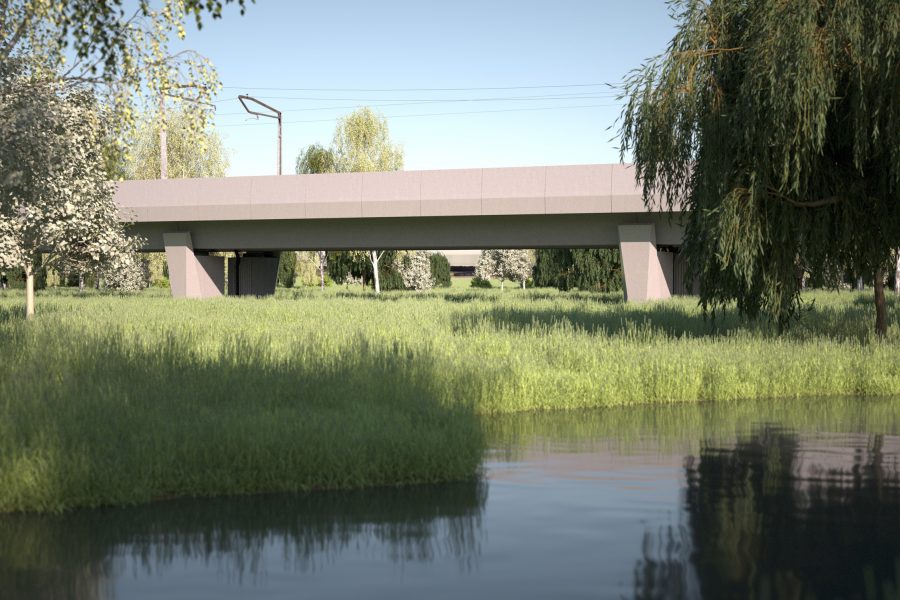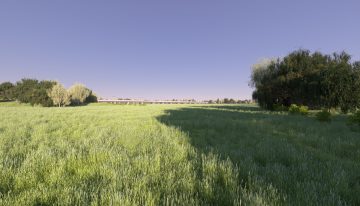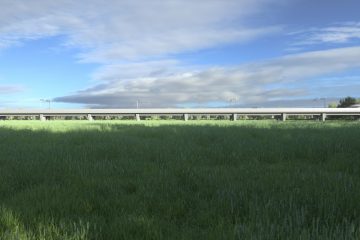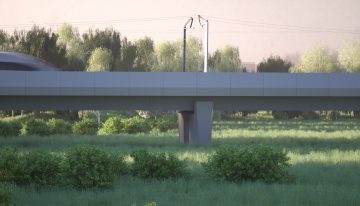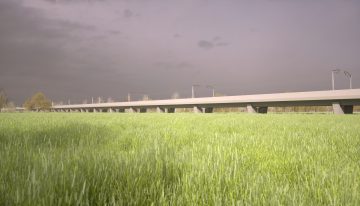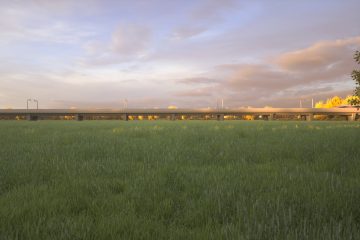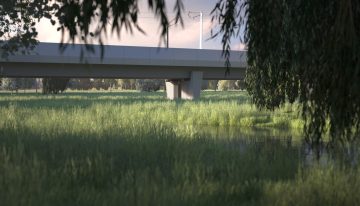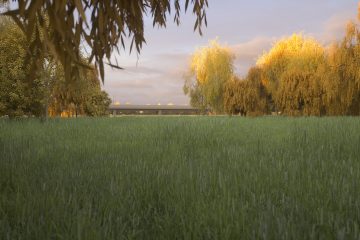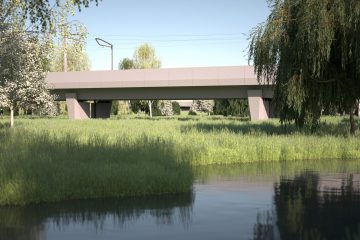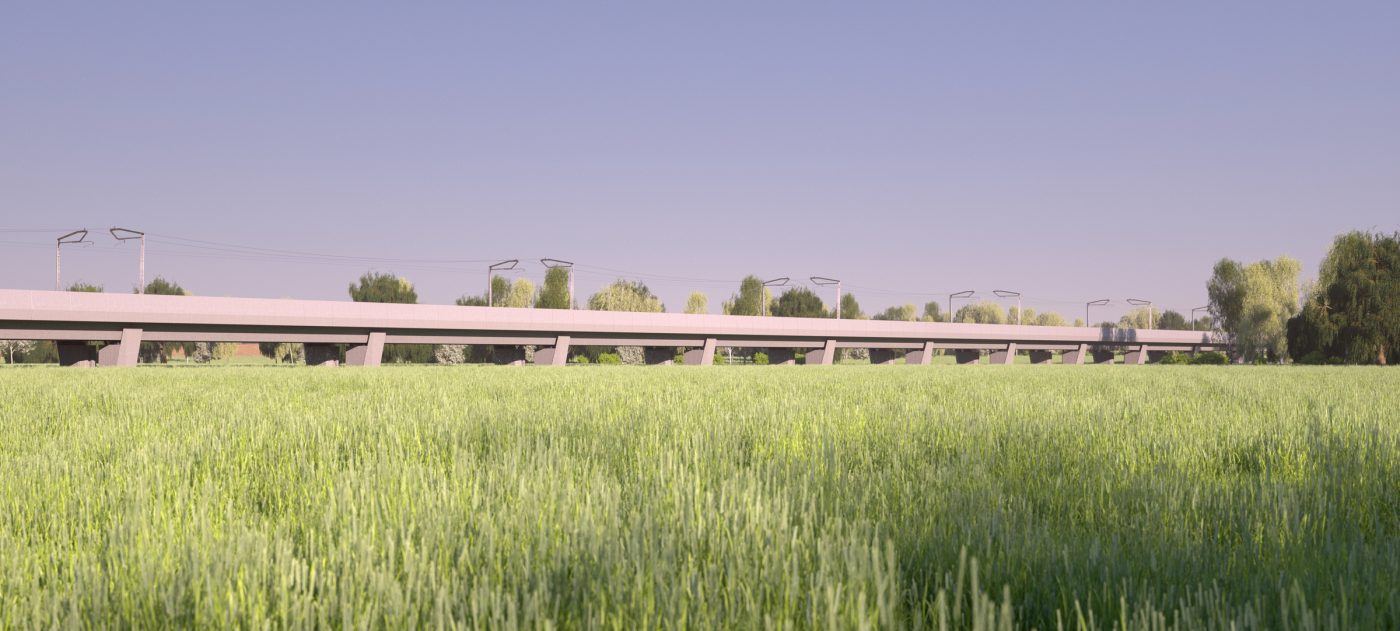
Thame Valley Viaduct
The Thame Valley Viaduct crosses the flood plain of the River Thame, just outside Aylesbury. It will carry HS2 trains at speeds of up to 225mph (360km/h) between London and Birmingham and is designed to ensure trains will be able to continue running even during heavy rain and flooding, making it climate resilient.
Viaduct construction
Construction of the Thame Valley Viaduct has passed the half-way point. It is the first major railway viaduct in the UK to be almost entirely manufactured off-site, a move that represents a major step forward for viaduct design and boosts safety and efficiency on site.
The structure of the viaduct has been simplified with two wider, hollow, beams per span instead of eight smaller beams. The new lighter-weight structure requires less carbon-intensive concrete and steel, reducing its carbon footprint by about a third, and is easier to assemble when it’s slotted together like a giant Lego set on site. As well as cutting carbon in terms of material, this approach requires fewer lorries to deliver material to site, cuts waste and reduces disruption for the community during construction.
Off-site manufacturing also helps spread contract opportunities and jobs through our supply chain across the UK. The beams and piers for this viaduct are being manufactured in a factory on the Isle of Grain, with 200 people, including apprentices and graduates from nearby universities, delivering these as well as tunnel segments for our London tunnels.
Viaduct design
The Thame Valley Viaduct is close to a residential area and forms part of the scenic River Thame corridor.
To help it blend in with its surroundings the viaduct will be set low into the landscape with a simple and consistent profile. The underside of the viaduct will be just three metres above the ground, with thirty-six 25m-long spans crossing the river and surrounding wetlands to protect against flooding. The piers will also be extended to nearly connect with the parapet edge, helping to enhance the appearance of a light and narrow structure.
Around the viaduct, the river floodplain will be enhanced to boost biodiversity and help better manage flood water. This will include replacing existing arable land with new wildlife-rich areas of woodland and wetland.
Key facts
- Length: 880m
- Height: Around 3m
- Number of piers: 35 pairs
- Construction approach: Off-site manufacture – all major components are being manufactured off-site.
- Progress: Over 50% complete: Work is well underway on the installation of piers, pre-cast beams and deck that will support the railway.
- Environment: 33% carbon saving – hollow viaduct deck beams require less material, cutting carbon by around a third.
Keeping you informed about our works

Stay informed about the works
Find information about HS2 works and activities taking place in your area.

Managing impacts of construction
Find out information about how we manage construction impacts.
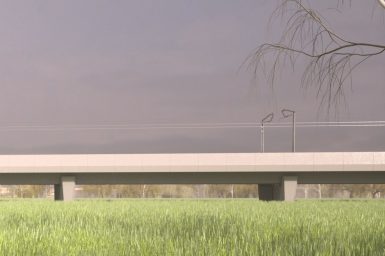
Construction look-ahead
Read our three-month lookahead for associated work in Buckinghamshire and Oxfordshire.

Find out what HS2 means for Buckinghamshire and Oxfordshire
This section provides you with information about HS2 works and developments in your area.
Find out more